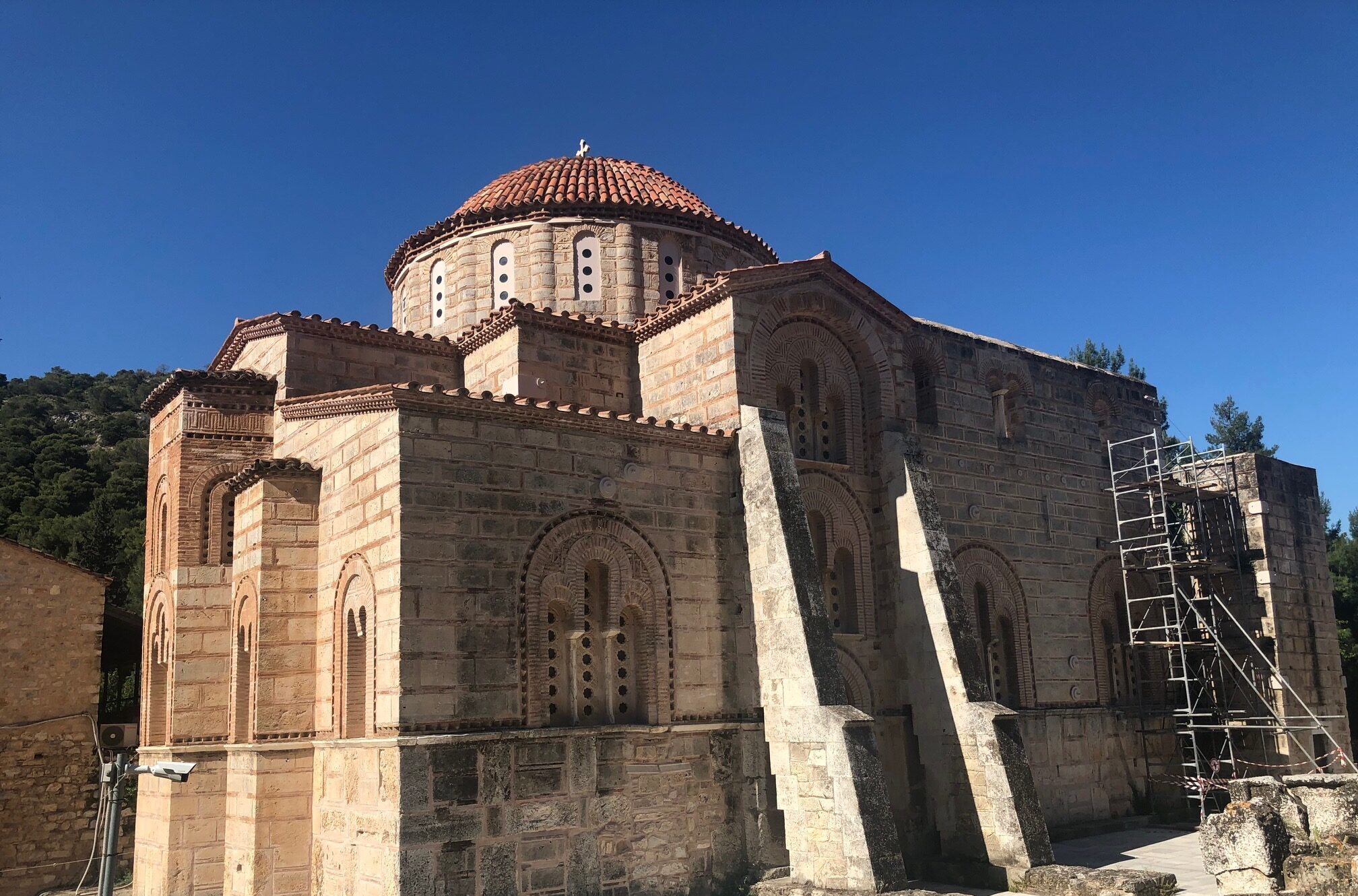The Dafni monastery is a must-see for those who appreciate Byzantine art. Richly decorated in the 11th century by artists from Constantinople, the mosaics that adorn it are of the utmost beauty. The Dafni monastery is one of Greece’s 20 UNESCO World Heritage sites in Greece !
Unfortunately, the monastery has suffered, only the main church and a few cells still standing today. Its location close to a busy main road does not reflect the peace and quiet that should reign in these places of contemplation.
However, we recommend this visit, especially if you combine it with the Eleusis site and why not a stop at Mikrolimano in Piraeus.
History of the Dafni monastery
The monastery of Dafni (Daphni) is dedicated to Domition of Theotokos (Mother of God). It lies to the west of Athens on the road to Eleusis. It was probably occupied in antiquity by a sanctuary dedicated to Apollo.
The establishment of this large and wealthy building seems to be linked to imperial court circles, although the exact identity of its owner and its construction date are unknown.
A fortified enclosure protects the monastery. In the center is the Catholicon , the main church. It dates from the second half of the 11th century and is typical of octagonal cross architecture. Its main feature is a large dome supported by 8 pillars. At either end of the church are chapels and a narthex, while a crypt occupies the basement.
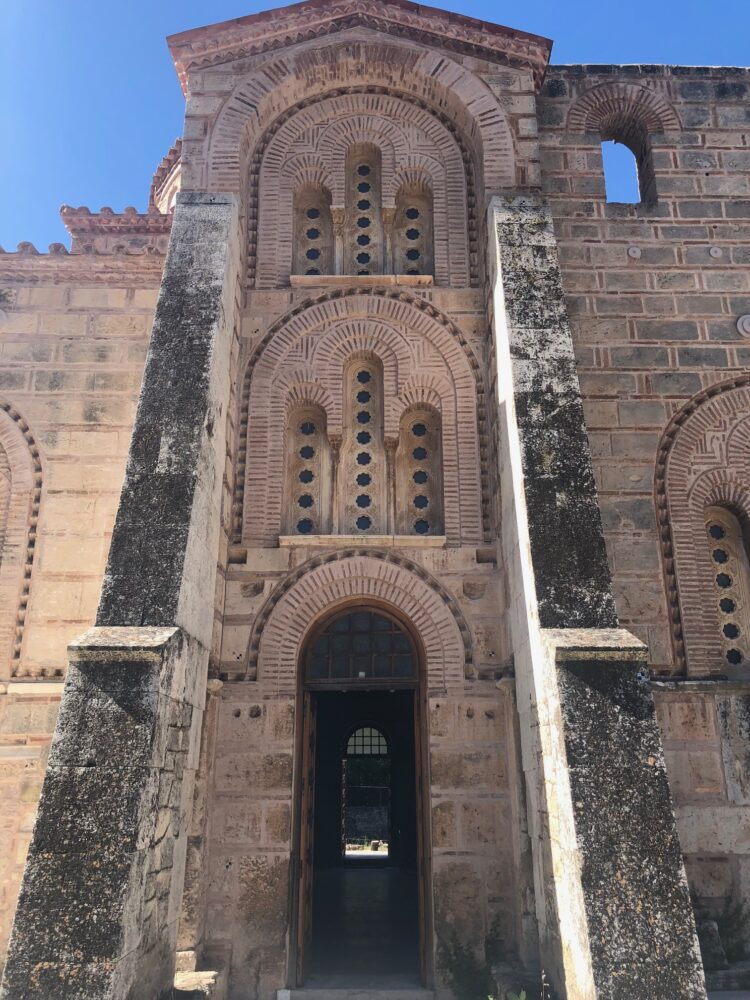
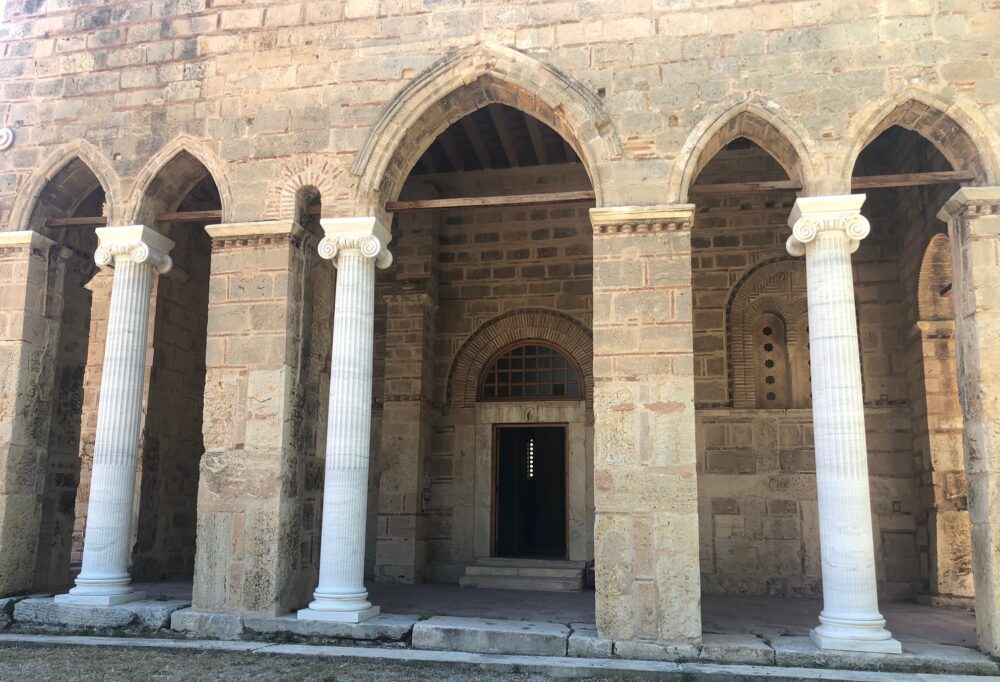

In 1207, an exonarthex in the form of an open portico was added to the church. The work was carried out by Cistercian monks following a major earthquake.
The monastery also included cells (some of which are still visible and house a small museum), baths and a large refectory, of which only the ruins remain.
After the War of Independence, Dafni was no longer a religious center, but served for a time as a barracks for Bavarian troops, then for a few years in the 19th century as a sanatorium. Today, the site is still being restored, but is open to the public.
Inside the monastery
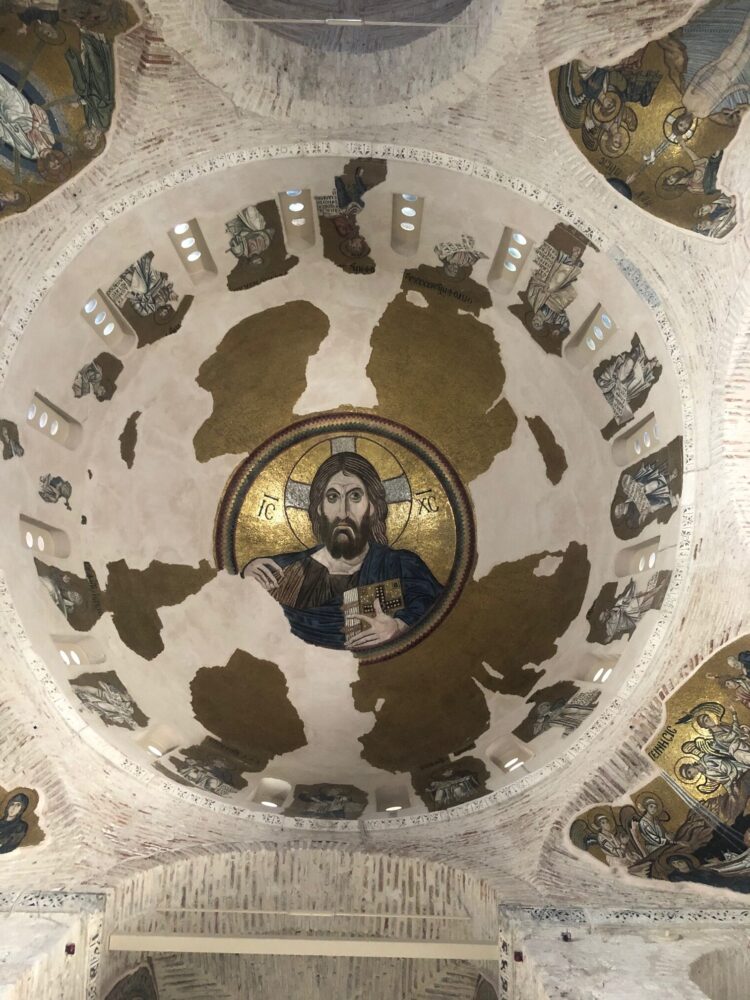
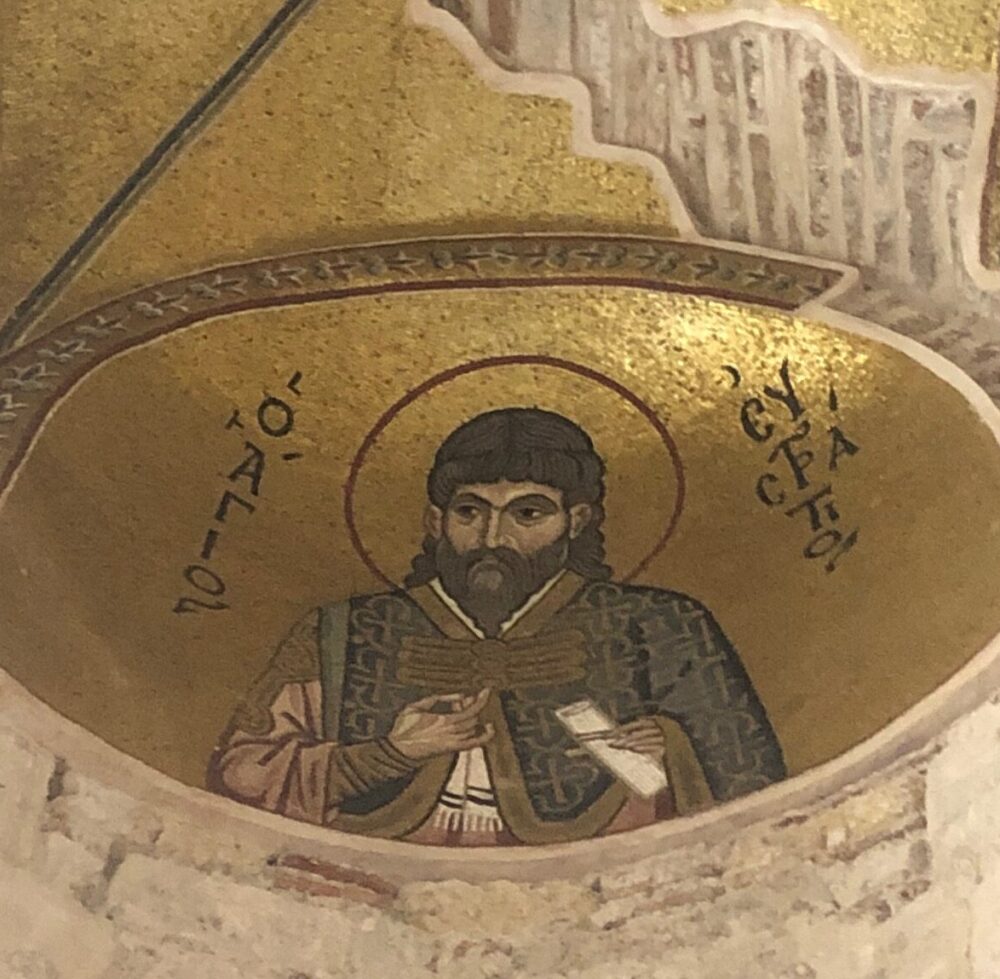
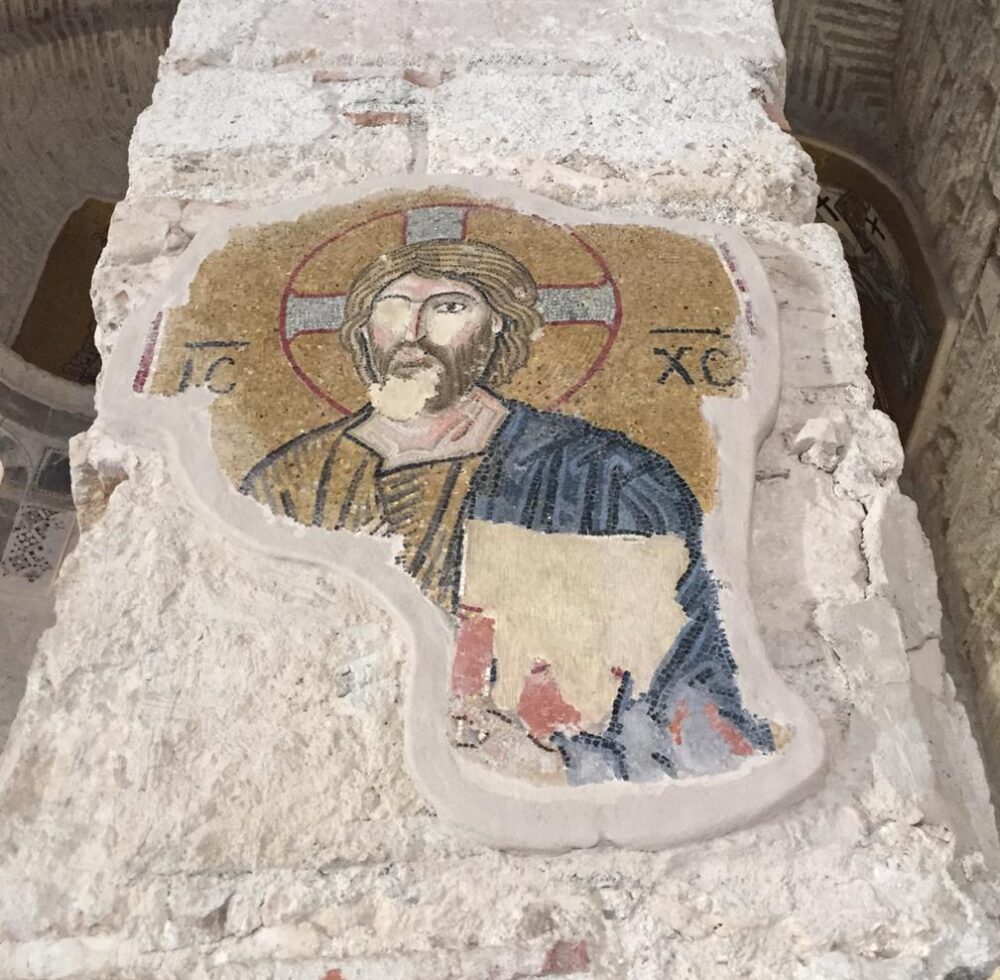
Inside the church, the lower walls are lined with marble and sculpted decorations. The painted frescoes date from the 17th century.
This magnificent mosaics on the upper walls and ceiling are a perfect example of Byzantine art. The mosaics date from the 11th century and were probably created by artists from Constantinople, the capital of the empire at the time.
The most impressive is undoubtedly that of Christ Pantocrator (located in the center of the dome), surrounded by his prophets. Elsewhere in the church, you’ll find scenes from the life of Jesus (the Annunciation, Christ’s baptism, the Crucifixion…).
Practical information
Where is the Daphni monastery located?
The exact address is: Iera Odos, Chaidari 124 61, Greece – Here on Google Maps
Prices and opening hours of Dafni Monastery
The Daphni monastery has long been closed to the public. Today, although it is still undergoing renovation, it is open to the public and admission is free for all. Information on the official Odysseus Culture website.
Open all year round: Wednesdays, Thursdays, Fridays, Saturdays and Sundays from 08:30 to 15:30. Closed on Mondays and Tuesdays.
How to get to Dafni (Daphni) monastery?
- By car, take the Iera Odos or Athinon Avenue road.
- Alternatively, by public transport: take metro line 3 towards Agia Marina, then buses 801, 811, 865, 836, 866, 876 and Α16, get off at the “Psyciatreio/Moni Dafniou” stop.
What to do nearby?
A visit to the monastery takes about 1 hour. So you can easily pair it with another destination. We particularly recommend a visit to the nearby site of Eleusis. And for those who want to relax and unwind, there’s also the opportunity to visit the port of Mikrolimano (near Piraeus). This charming little port is lined with numerous restaurants with terraces.
Sophie B.
Updated March 29, 2024
